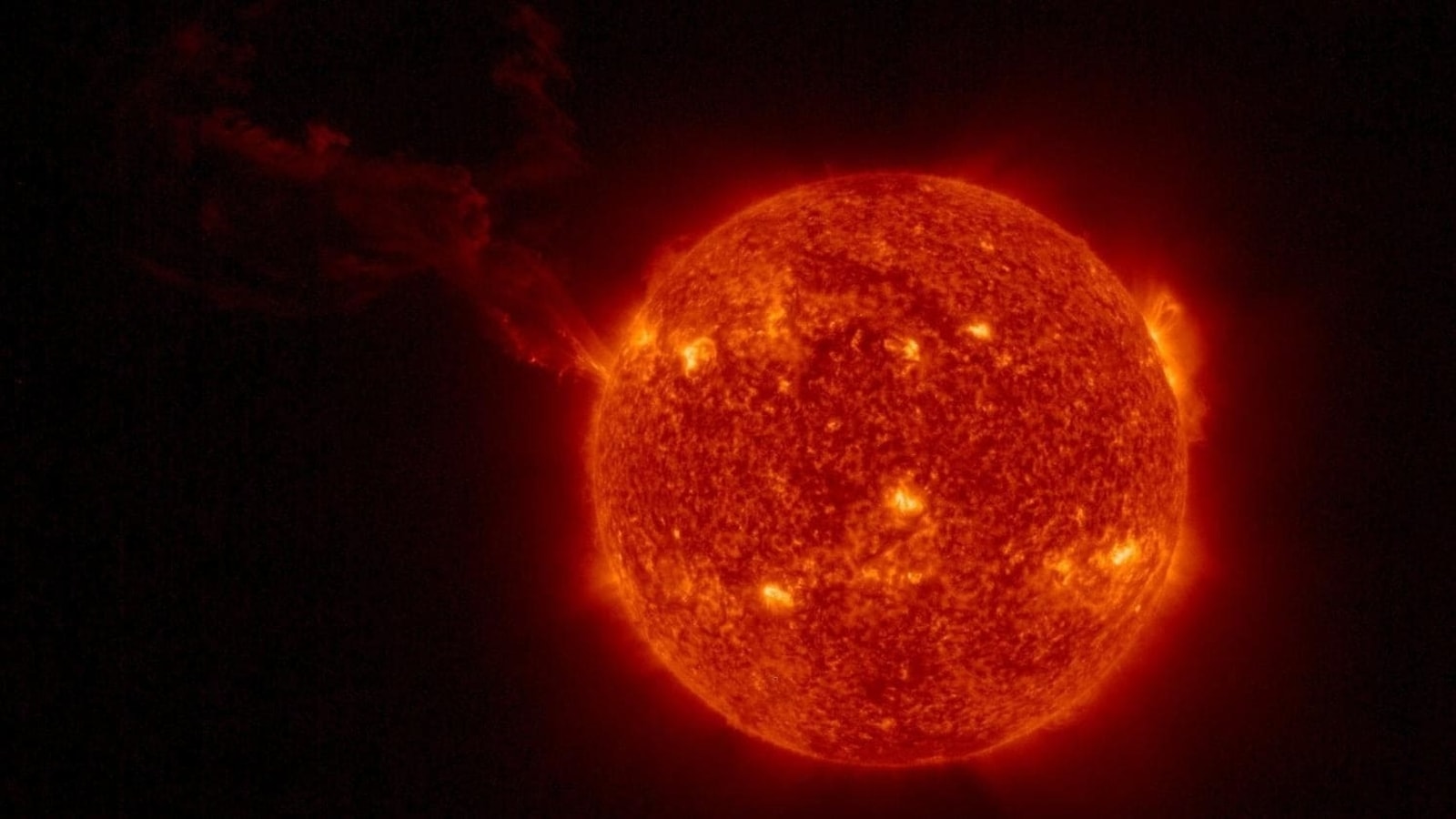Solar storm threat increases as MASSIVE sunspot faces Earth, NASA satellite shows
The source behind the nearly X-class solar flare eruption on Tuesday, a gigantic sunspot, is now in full view of the Earth, NASA satellite imagery has shown. Astronomers fear another major solar storm could be on the horizon.






 View all Images
View all ImagesLast weekend, the NASA Solar and Heliospheric Observatory (SOHO) satellite detected that a massive sunspot lurked on the farside of the Sun which was big enough to change the way the Sun vibrates. On its way to turning and facing the Earth, it exploded on Tuesday and released a nearly X-class solar flare that sparked radio blackouts in North America. Now, the gigantic sunspot is finally facing the Earth and researchers are concerned about the possibility of yet another major solar storm spell.
As per a SpaceWeather.com report, “The source of Monday's partially-eclipsed X-flare is emerging into full view. It is a large sunspot, some 3 times wider than Earth, and is surrounded by a bright froth of magnetic turbulence. Since May 16th, it has been relatively quiet--gathering strength for the next eruption”.
Giant sunspot creates solar storm scare
The concerns about solar storms are not without merit. The last time a particularly unstable sunspot appeared on the Earth-side of the Sun, it resulted in the most severe solar storm in the last six years. The incident occurred on April 20 and was attributed due to a coronal mass ejection (CME) cloud that was hurled due to a major explosion within the sunspot.
This particular sunspot has already shown signs of being potent after exploding once on Tuesday and causing a nearly X-class solar flare eruption. While NASA satellites highlight that it is relatively quiet now, it is considered that the magnetic turbulence around the sunspot will soon turn it active again.
A powerful solar storm hitting the Earth can damage satellites, disrupt GPS, mobile networks, and internet connectivity, cause power grid failure, and even impact ground-based electronics.
The tech that is at work on NASA's SOHO
NASA's SOHO (Solar and Heliospheric Observatory) is a satellite that was launched on December 2, 1995. It is a joint project between NASA and the European Space Agency (ESA) to study the sun, its atmosphere, and its effects on the solar system. Equipped with 12 scientific instruments, such as Extreme Ultraviolet Imaging Telescope (EIT), Michelson Doppler Imager (MDI), LASCO (Large Angle and Spectrometric Coronagraph) and others, SOHO captures images of the sun's corona, measures the velocity and magnetic fields of the sun's surface, and observes the faint corona around the sun.
Catch all the Latest Tech News, Mobile News, Laptop News, Gaming news, Wearables News , How To News, also keep up with us on Whatsapp channel,Twitter, Facebook, Google News, and Instagram. For our latest videos, subscribe to our YouTube channel.





























